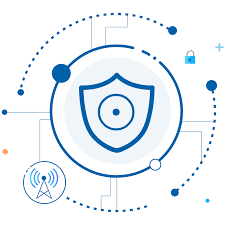The Growing Importance of Telecom Cybersecurity in the 5G Era
The telecom industry is rapidly evolving, with the rise of 5G networks promising faster speeds, lower latency, and broader connectivity. However, with this technological leap comes a significant increase in cyber threats. As telecommunications networks expand to accommodate more devices, users, and data, securing these networks is more critical than ever. In this blog, we’ll explore why telecom cybersecurity has become a top priority and what steps can be taken to protect these essential infrastructures.
Why Telecom Cybersecurity is Crucial
Telecommunications networks are the backbone of modern society, supporting everything from personal communications to critical infrastructure. As such, they are prime targets for cybercriminals, hacktivists, and even state-sponsored actors. Any breach or disruption in these networks could have widespread consequences, including financial losses, operational downtime, and compromised national security.
With the rollout of 5G and the expansion of the Internet of Things (IoT), telecom networks are now more vulnerable to cyberattacks. These networks handle sensitive personal data, corporate communications, and government systems, making them an attractive target for attackers looking to steal information or disrupt services.
Key Cybersecurity Threats in Telecom
DDoS Attacks (Distributed Denial of Service)
Telecom networks are often the target of DDoS attacks, where hackers flood the network with traffic to overwhelm the system and cause service disruptions. This type of attack can lead to significant downtime, loss of revenue, and damage to a provider’s reputation.Signalling System Vulnerabilities
Protocols like SS7 (Signalling System No. 7) and Diameter, which are used for call setup and routing, are known to have vulnerabilities. Attackers can exploit these weaknesses to intercept calls, track users’ locations, or even impersonate subscribers to commit fraud.Insider Threats
Telecom operators must also contend with insider threats—employees or contractors who may have access to critical systems. Insider actions can lead to data breaches or network disruptions, whether malicious or accidental.IoT and 5G Exploits
With the rapid adoption of IoT devices and the spread of 5G networks, the number of connected devices is skyrocketing. Unfortunately, many IoT devices lack robust security measures, making them easy entry points for attackers. These devices can be a gateway to launch attacks on the broader telecom network.Supply Chain Vulnerabilities
Telecom networks rely on a vast ecosystem of suppliers and third-party vendors. A breach in one part of the supply chain can have cascading effects on the entire network. Compromised hardware or software can introduce backdoors or malware into critical infrastructure.
Telecom Cybersecurity Solutions
Given the high stakes, telecom providers must implement a multi-layered approach to cybersecurity. Here are some of the most effective strategies for protecting telecom networks:
Network Segmentation
Segmenting the telecom network into smaller, isolated parts can help limit the spread of an attack. If one section of the network is compromised, segmentation ensures that the attacker cannot access the entire system.Real-time Monitoring and Threat Detection
Implementing advanced monitoring tools that detect and respond to suspicious activities in real-time is essential. Solutions like intrusion detection systems (IDS), intrusion prevention systems (IPS), and Security Information and Event Management (SIEM) platforms can help identify threats before they cause damage.Signalling Firewalls
Deploying signalling firewalls helps protect the vulnerabilities in signalling protocols like SS7 and Diameter. These firewalls filter out malicious traffic and detect unauthorized access attempts, preventing attacks like call interception or user impersonation.Encryption
Encrypting data, both at rest and in transit, is crucial for protecting sensitive information. This ensures that even if data is intercepted, it cannot be read or exploited by attackers.Zero Trust Architecture
The zero-trust security model assumes that no one, inside or outside the network, should be trusted by default. All users and devices must be verified before being granted access to network resources. This approach helps reduce the risk of insider threats and unauthorized access.Regular Software Updates and Patch Management
Cybercriminals often exploit known vulnerabilities in outdated software. By keeping systems and applications up to date with the latest patches, telecom providers can reduce their exposure to attacks.Breach and Attack Simulations
To ensure readiness against potential cyber threats, telecom operators should regularly conduct breach and attack simulations. These tests simulate real-world attacks, allowing organizations to evaluate the effectiveness of their security measures and identify areas for improvement.
The Role of Governments and Regulations
Governments and regulatory bodies around the world are increasingly focusing on the importance of telecom cybersecurity. Many countries have implemented strict regulations requiring telecom providers to maintain high levels of security and to report breaches promptly.
For example, the European Union’s GDPR (General Data Protection Regulation) places stringent requirements on how telecom providers handle personal data, while the NIS Directive (Directive on Security of Network and Information Systems) mandates security measures for critical infrastructure, including telecommunications.
In the U.S., the Federal Communications Commission (FCC) and the Cybersecurity and Infrastructure Security Agency (CISA) are involved in setting standards and providing guidance for securing telecom networks.
Conclusion
As the telecom industry undergoes a digital transformation driven by 5G and IoT, the need for robust telecom cybersecurity has never been greater. Telecom providers must adopt a proactive approach to security, implementing advanced technologies and strategies to safeguard their networks from evolving threats.
By focusing on network segmentation, real-time monitoring, encryption, and regulatory compliance, telecom operators can protect their infrastructure, ensure uninterrupted service, and maintain trust with their customers. The future of telecommunications is connected, fast, and exciting—but it must also be secure.




Comments
Post a Comment